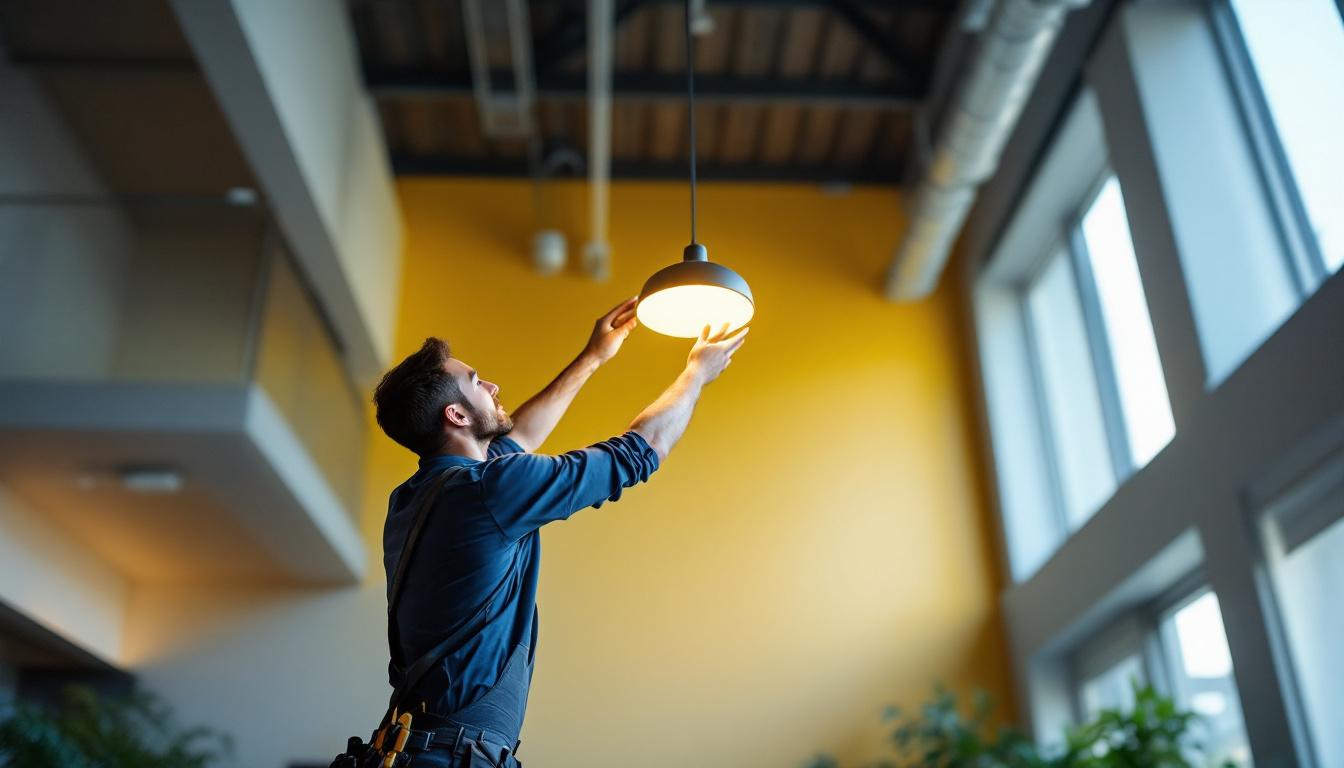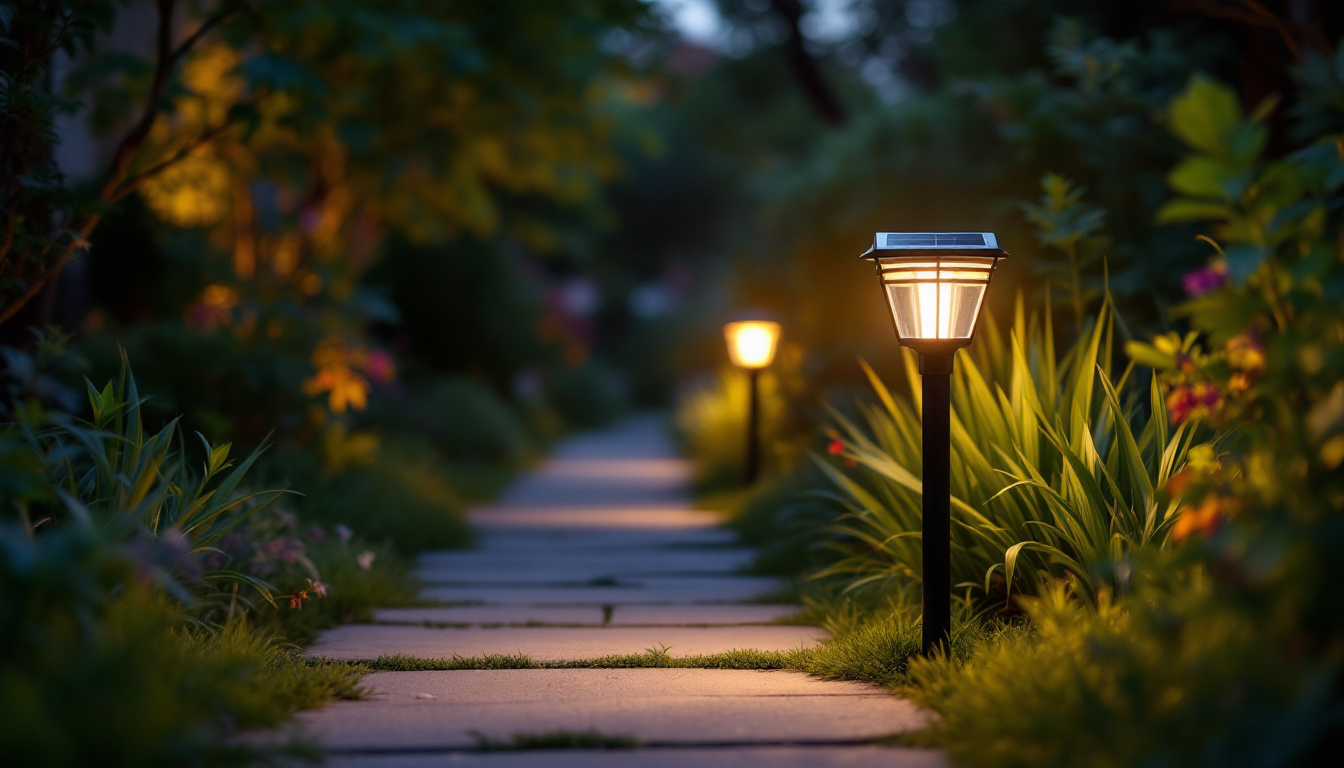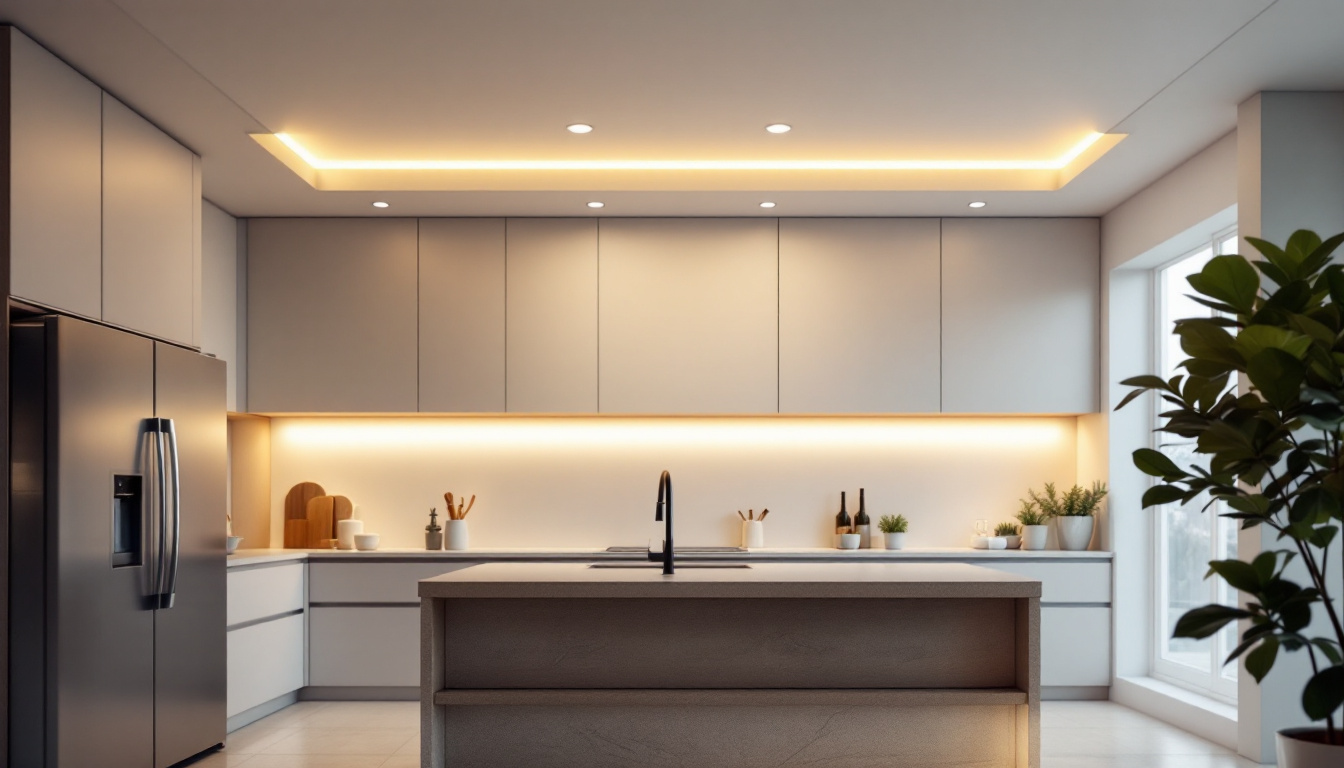
Lighting high-ceiling spaces is not just about choosing brighter bulbs or bigger fixtures. It’s a complex task that demands precision, planning, and the right equipment. High ceilings—often found in warehouses, gyms, auditoriums, and industrial facilities—pose unique challenges that can quickly escalate costs and extend project timelines if not handled properly.
One key difficulty is the height itself. Installing or maintaining lighting fixtures that are 20 feet or higher requires specialized tools such as lifts, scaffolding, or long-reach poles. These add labor hours and increase safety risks. Additionally, the wrong lighting can lead to uneven illumination, glare, or insufficient brightness, which negatively impacts the space’s functionality and client satisfaction. The challenge is further compounded by the need to consider the type of activities that will take place in these spaces, as different tasks may require varying levels of brightness and light distribution.
In addition to the physical challenges of installation, there is also the consideration of energy efficiency and sustainability. High-ceiling spaces often consume more energy due to the sheer volume of air that needs to be illuminated. This makes it essential to select lighting solutions that not only provide adequate brightness but also minimize energy consumption. LED fixtures, for instance, have become increasingly popular for high ceilings due to their longevity and efficiency, offering a solution that can help reduce both operational costs and environmental impact.
Contractors often rely on standard fixtures designed for typical ceiling heights. When applied to high ceilings, these lights may fail to deliver adequate coverage, forcing the use of more fixtures than necessary. This not only inflates material costs but also complicates installation and maintenance efforts. Furthermore, the aesthetic aspect of lighting cannot be overlooked; poorly designed lighting can detract from the visual appeal of a space, making it feel uninviting or even disorienting.
Moreover, traditional lamps can burn out faster when used in high-ceiling environments due to heat buildup and difficult replacement access. This leads to frequent service calls, increasing both downtime and expenses. Lighting contractors who don’t address these issues early on risk unhappy clients and reduced profitability. In contrast, investing in advanced lighting control systems can help mitigate some of these concerns. By incorporating smart technology, contractors can create adaptable lighting solutions that respond to the specific needs of the space, ensuring optimal performance while reducing maintenance frequency and costs.
Selecting fixtures specifically engineered for high ceilings is the first step toward saving time and money. High bay LED lights, for example, are designed to provide powerful, focused illumination from a distance. Their energy efficiency and longevity make them a smart investment for contractors and clients alike.
These fixtures often come with features such as adjustable beam angles and dimmable controls, allowing for tailored lighting that meets the exact needs of the space. This flexibility reduces the number of fixtures required and simplifies installation.
LEDs have transformed the lighting industry, especially for high-ceiling applications. Their low energy consumption reduces operational costs significantly. Plus, LEDs have a lifespan that can exceed 50,000 hours, which means fewer replacements and less maintenance.
For contractors, this translates into fewer service visits and less time spent on difficult fixture changes. Clients benefit from lower utility bills and improved lighting quality, making LED solutions a win-win scenario.
Moreover, the versatility of LED technology allows for innovative designs that can enhance the aesthetic appeal of a space. From sleek, modern fixtures to more traditional styles, there is an LED option to suit every architectural theme. This adaptability not only improves the visual comfort of a room but also highlights architectural features, creating a more inviting atmosphere.
Additionally, many high bay LED lights are now equipped with smart technology, enabling them to be integrated into building management systems. This allows for automated adjustments based on occupancy or natural light levels, further optimizing energy use and ensuring that spaces are always well-lit when needed. Such advancements in lighting technology not only contribute to sustainability efforts but also align with the growing trend of smart building solutions, making them an essential consideration for modern construction projects.
Efficiency during installation is critical when working at heights. Using fixtures that are lightweight and easy to mount can shave hours off a project timeline. Modular lighting systems that snap together or use quick-connect wiring reduce the need for complex electrical work. This not only accelerates the installation process but also minimizes the potential for errors that can occur with more complicated setups. The ability to quickly adapt and modify installations on-site allows contractors to respond to unexpected challenges without significant delays, ensuring that projects stay on schedule.
Maintenance also becomes less daunting with thoughtfully designed fixtures. Features like tool-less access to bulbs and drivers, or remote monitoring capabilities, allow contractors to perform upkeep faster and with fewer risks. Additionally, the integration of smart technology into lighting systems can provide real-time data about fixture performance, alerting maintenance teams to issues before they escalate. This proactive approach not only extends the lifespan of the fixtures but also enhances overall energy efficiency, contributing to sustainability goals.
Investing in the right equipment can dramatically improve productivity. Articulating lifts and telescoping poles enable safe and swift access to high fixtures without extensive setup. Drones equipped with cameras are increasingly used for inspection, reducing the need for physical climbs. These aerial devices can capture high-resolution images and videos, allowing teams to assess conditions from the ground and prioritize tasks effectively. This capability is particularly valuable in large facilities where accessing every corner can be time-consuming and risky.
These technologies not only speed up the work but also enhance safety, which is paramount in high-ceiling environments. Fewer accidents mean fewer delays and lower insurance costs, directly benefiting contractors’ bottom lines. Moreover, the use of advanced tools can improve the overall quality of work, as technicians are able to focus on precision rather than the logistics of accessing hard-to-reach areas. By streamlining both installation and maintenance processes through innovative equipment and design, contractors can ensure a higher standard of service while fostering a safer and more efficient working environment.
Smart lighting choices impact more than just upfront expenses. Energy-efficient fixtures reduce ongoing costs, and durable products minimize replacement frequency. This long-term perspective is vital for contractors aiming to offer value to their clients while maintaining profitability. Moreover, the integration of smart lighting systems can provide additional savings through automation. By utilizing sensors and timers, these systems can adjust lighting based on occupancy or natural light levels, further decreasing energy consumption and costs over time.
Additionally, many regions offer incentives or rebates for installing energy-saving lighting systems. Contractors who stay informed about these programs can help clients access financial benefits, making their proposals more attractive and competitive. These incentives can significantly offset the initial investment, allowing clients to see a quicker return on their investment. Furthermore, as sustainability becomes a priority for many businesses, showcasing energy-efficient solutions can enhance a contractor’s reputation as a forward-thinking partner in environmental responsibility.
Proper lighting design reduces waste and enhances performance. Using photometric analysis tools, contractors can plan fixture placement and beam angles to achieve uniform illumination with fewer fixtures. This precision cuts material costs and simplifies installation. Additionally, by considering the specific needs of each space—such as task lighting in work areas or ambient lighting in relaxation zones—contractors can create a tailored lighting experience that meets the unique demands of their clients.
Good design also improves occupant comfort and productivity, which clients appreciate. When lighting contractors deliver spaces that look and feel right, it builds trust and opens doors for future projects. The psychological effects of well-designed lighting can lead to increased employee satisfaction and reduced fatigue, making it a critical factor in workplace design. By highlighting these benefits, contractors can position themselves as not just service providers, but as integral partners in enhancing the overall quality of life within a space.
Lighting high ceilings is a specialized skill that requires knowledge, the right products, and efficient processes. Contractors who invest in understanding these elements save time on the job, reduce material waste, and lower maintenance demands. The result is a more profitable operation and satisfied clients.
By adopting modern lighting technologies and leveraging smart installation techniques, contractors can turn the challenge of high ceilings into an opportunity. It’s not just about lighting a space—it’s about lighting it right, the first time.
Moreover, the choice of lighting fixtures plays a crucial role in enhancing the aesthetics of a room with high ceilings. Pendant lights, chandeliers, and track lighting can create a dramatic effect, drawing the eye upward and emphasizing the architectural features of the space. Selecting fixtures that complement the overall design theme not only improves functionality but also adds character and warmth to the environment. This attention to detail can significantly elevate the perceived value of a property, making it more appealing to potential buyers or renters.
In addition to aesthetic considerations, energy efficiency is another critical factor in high ceiling lighting. With the rise of LED technology, contractors can offer solutions that not only illuminate vast spaces effectively but also reduce energy consumption. This not only benefits the environment but also translates to lower utility bills for clients. By promoting sustainable practices and energy-efficient options, contractors can position themselves as forward-thinking professionals who care about both their clients’ needs and the planet.
Ready to elevate your high-ceiling lighting projects while maximizing savings and efficiency? Look no further than LumenWholesale for all your lighting needs. Our spec-grade lighting products are designed to meet the challenges of any space, ensuring you deliver the best results to your clients. With unbeatable wholesale prices and free shipping on bulk orders, you can trust that you’re getting the highest quality without the extra costs. Make the smart choice for your business and visit LumenWholesale today to explore our selection and take advantage of the best value in wholesale lighting.

Illuminate your projects with our comprehensive guide on solar powered outdoor lights.

Discover why exterior solar lights are essential for any successful lighting project.

Discover how the right kitchen ceiling light can transform your space while boosting energy efficiency.

Discover the essential checklist for lighting contractors with “Bullet Led.” This comprehensive guide covers everything from project planning to installation tips, ensuring efficient and successful lighting solutions for any project.